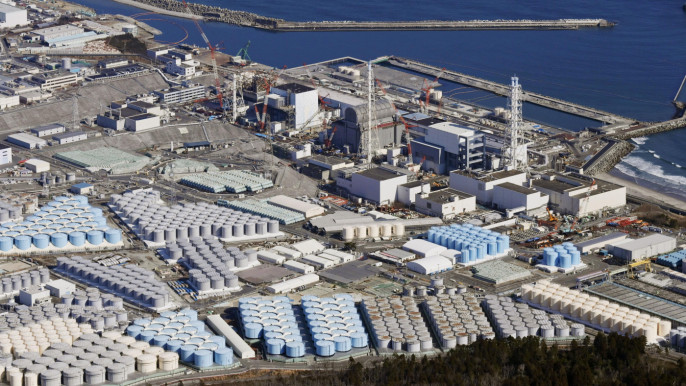UN atomic watchdog says tritium concentration of discharged Fukushima water ‘far below’ operational limit
Japan has repeatedly insisted the wastewater will be harmless, with its position backed by UN atomic watchdog

An aerial view shows the storage tanks for treated water at the tsunami-crippled Fukushima Daiichi nuclear power plant in Okuma town, Fukushima prefecture, Japan
The tritium concentration in the wastewater from the stricken Fukushima-Daiichi nuclear plant, which Japan began releasing into the Pacific Ocean Thursday, is well below the operational limit, the UN nuclear watchdog said.
“IAEA (International Atomic Energy Agency) experts this week took samples from the first batch of diluted water prepared for discharge,” the atomic watchdog, which oversees the process, said in a statement.
“The IAEA’s independent on-site analysis confirmed that the tritium concentration in the diluted water that is being discharged is far below the operational limit of 1,500 becquerels per litre,” it added.
The limit is 40 times lower than the Japanese national safety standard for tritium levels in water, which is in line with the international standard of 60,000 becquerels per litre (Bq/L).
It is also around seven times lower than the limit set by the World Health Organisation (WHO) for drinking water (10,000 Bq/litre).
Japan has repeatedly insisted the wastewater will be harmless, with its position backed by UN atomic watchdog.
The start of the discharge of around 540 Olympic swimming pools’ worth of water over several decades is a big step in decommissioning the still highly dangerous site 12 years after one of the world’s worst nuclear accidents.
Although such water release is standard practice in the nuclear industry, local fisherman in Japan as well as a furious China have blasted the move.
In an effort to diminish concerns, the IAEA has dispatched a team to the plant to ensure that “the process is carried out in a safe and transparent way”.
Japan plans to release by 2050 some 1.34 million tonnes of wastewater now stored at the plant site.




